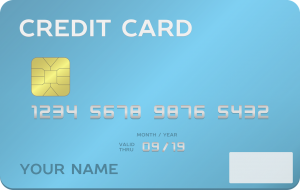In the 1920s, there was a significant shift in the tech world that has affected our lives in the world we live in today.
Companies involved in the oil trade and others in the hotel sector started issuing credit cards to their customers in the United States of America.
That made a significant shift not only in the tech world. It also created a considerable stride in affecting the USA’s economy. Read on to learn about the history of credit cards and how their use today differs from their initial launch.

First Idea of Credit Cards
The first idea of credit cards started in the 1790s. Though it wasn’t much of a credit card per se, it was more of a credit system.
During those times, farmers could get seeds on credit, and they would then pay for them after harvest. This was just in the early years, though, and that’s how far credit cards can be traced. That was before the merging of the credit and the card happened in the 1920s.
The Great Merge
The merging of credit and cards is referred to as the “great merge.” This happened because most companies felt that they needed to identify customers and their accounts quickly.
They realized this could be best done with a physical and mobile object. So, sometime between the 1920s to 1930s, credit was merged with a card.
Early Years of the Credit Cards
In the early years of the credit card, it was mainly used by specific companies to help their customers finance their purchases. For example, if you did not have enough money to pay for gas and you had the company’s credit card, you’d still be able to buy gas.
It was a way to ensure that loyal customers never lacked what they wanted from the company. It was also a smart way for companies to keep customers loyal to them.
The Evolving Card
At some point, everything has to evolve and match the changing times. With credit cards, it wasn’t any different. With the ever-changing tech world, the changes have been meteoric.
In the 1920s to 1930s, metal coins and medals quickly evolved to rectangular metallic cards. These cards were primarily used to pay for gas and hotels for the specific hotels that offered the service.
In the 1940s, the trend continued with rectangular metallic cards, but there was a huge step forward. The airlines joined suit and started allowing travelers to purchase a ticket using credit cards.
In the 1950s, the card made a large change in appearance, as most companies began using plastic cards. This was also when most merchants started offering their services to credit cardholders. It was no longer just for a few clients to be used on specific companies, but really for anyone.
In the 1980s, the tech world evolved again, adding the magnetic stripe to the back of cards. Only specific computers could read the strip, and it also made the card more secure.
And finally, in the 1990s to 2010s, credit cards evolved to include EMV chips and mobile wallets to enhance growth further. The ease and accessibility of credit cards have never been greater than they are today.
Conclusion
Credit cards are ingrained in modern-day economics but many cardholders have no idea of the changes the cards have undergone over the years. Using credit cards today is simple, fast and hassle-free. They have come a long way since they first appeared in history.
